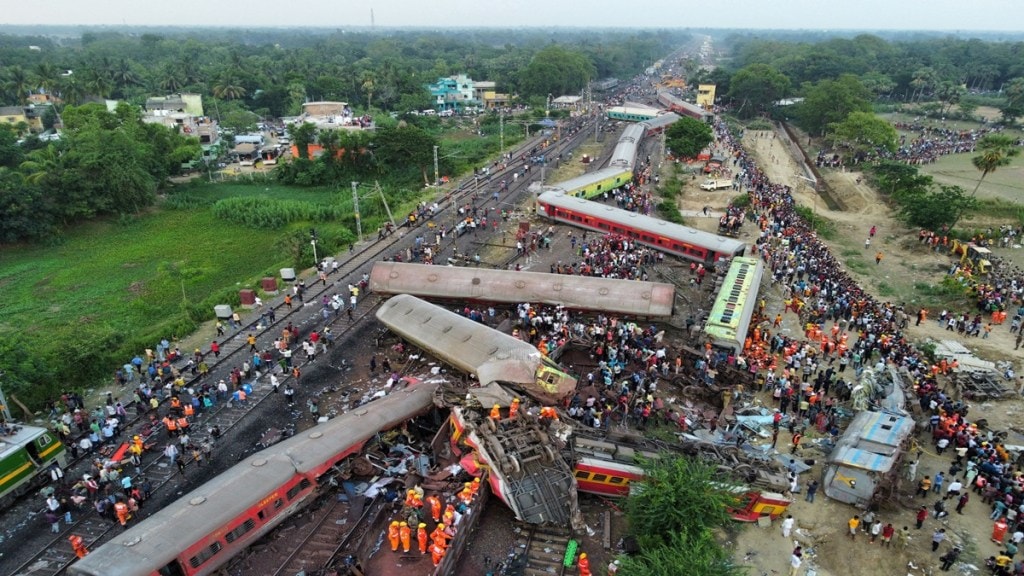Railway Minister Ashwini Vaishnaw recently revealed the cause behind the three-way train crash in Odisha involving the Bengaluru-Howrah Superfast Express, the Coromandel Express and a goods train on three separate tracks at Bahanaga Bazar Station in the Balasore district.
Vaishnaw revealed that it was a ‘change in the electronic interlocking system’ that led to the crash killing at least 290 persons and injuring hundreds. The CBI has already been handed over with the responsibility to find out who or what could have caused this change. Meanwhile, a lot of discussion is happening around the safety of this interlocking system and if at all it is worth it. For this we would first need to understand what this system is, how it works and if human interference can lead to a change in this electronic system.
What does interlocking mean?
Interlocking is a safety mechanism that prevents conflicting train movements on tracks by controlling the signals and points (switches) in a coordinated manner.
- The ‘signals’, as all of us must have seen at one point of time while travelling through trains, are the green,red,yellow lights that are installed on the side of rail tracks to hint the status of the track ahead. This is to ensure clear visibility for the train drivers. The red signal means that the train should halt immediately. The yellow signal warns the train driver to prepare to stop at the next signal. The train may proceed with caution but must be prepared to stop if required. The green signal indicates that the train has permission to proceed at the authorized speed. There is also a flashing yellow signal which warns the train driver to be cautious and prepared to encounter an obstruction or a temporary speed restriction ahead.
- The ‘points’ basically mean the switches or turnouts that are used to guide trains from one track to another at junctions, crossovers, or sidings. Points play a crucial role in controlling the movement of trains and ensuring safe and efficient operations. A ‘point’ consists of a pair of moveable rails called “switch rails” that can be aligned to either the straight track or the diverging track. Once the direction of the passing train is fixed, the point cannot change.
Points are essential for routing or re-routing trains to different platforms or connecting lines. They allow trains to change tracks while maintaining safe distances between them. The correct alignment of points is crucial to prevent derailments and ensure smooth transitions between tracks.
How does the electronic interlocking system work?
Earlier, interlocking systems in Indian Railways were mechanical which required manual operation by the signaller. However, the electronic interlocking system replaces these older systems with computer-based technology and is much more efficient. The system involves microprocessors, electronic circuits, and software algorithms. The system provides a computer layout of the movement of trains on signals, and the position of the points. It makes sure that signals are cleared to proceed only when the route ahead is safe and clear.
This is taken care of by highly trained proffessionals from the telecommunication and signalling department in Indian Railways. They are known as the ‘signal operators’ who are responsible for monitoring the signals, rail tracks and train movement.
Is it possible the system malfunctioned in the Odisha train accident?
Electronic interlocking system provides faster response times, is reliable, and provides enhanced flexibility in managing train movements. It also enables remote monitoring and control of signaling equipment, reducing the need for on-site maintenance and improving operational efficiency.
While electronic interlocking systems in Indian Railways are designed to be highly reliable, like any complex technology, there is a possibility of malfunctions occurring. However, these systems are built with redundancy and fail-safe mechanisms to minimize the risk of failures and ensure safe train operations.
For example if there is not proper sync between the signals or points or tracks, the system works to stop whichever train is coming, which means the signal would automatically turn red. This is also known as the ‘fail-safe’ system.
According to Railway Board Member (Operations and Business Development) Jaya Varma Sinha, any machine is “prone to failure even if it runs smoothly 99.9% of the time”, the Indian Express reported. She said that .1% possibility of failure cannot be ruled out.
Indian Railways has been implementing electronic interlocking systems across its network to upgrade its signaling infrastructure. These systems contribute to the overall safety and modernization of the railway network by facilitating smoother and more efficient train operations.
